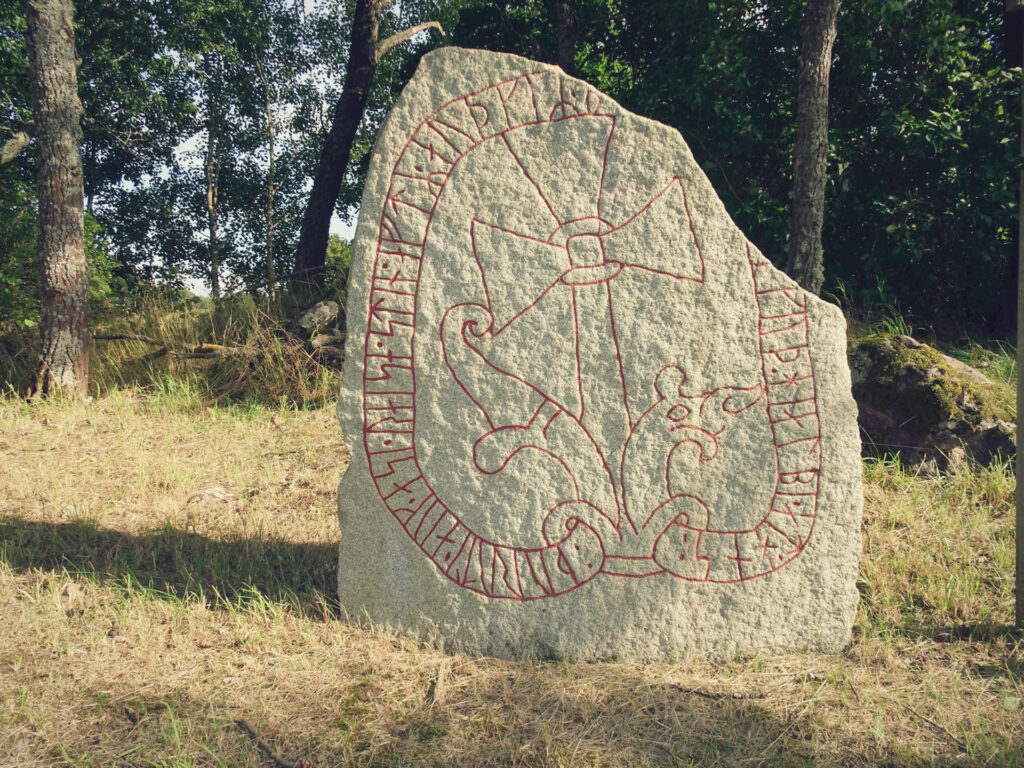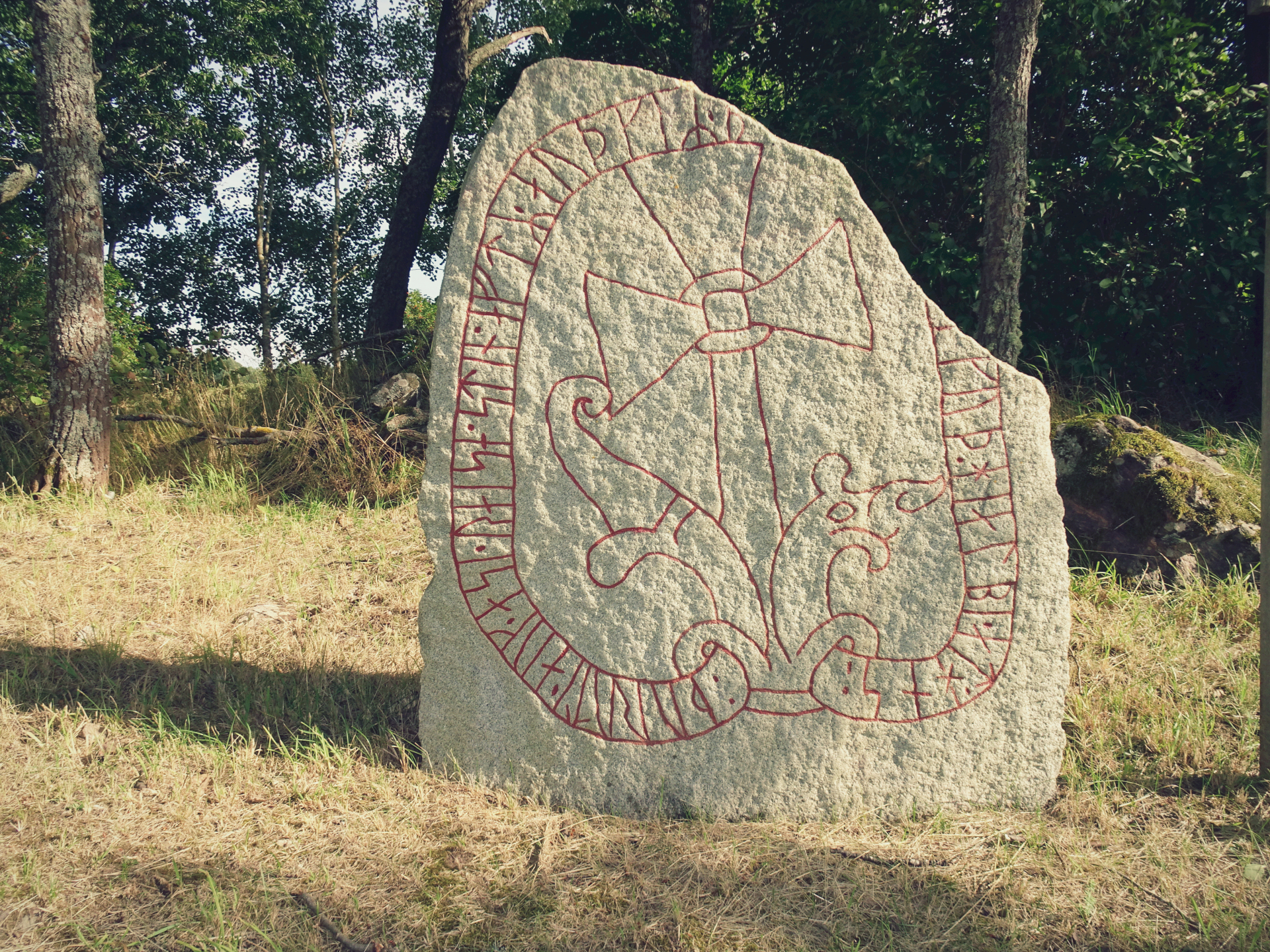
Runestone U 17, also known as Skytteholmsstenen (The Skytteholm Stone), is a runestone from the 11th century, located on Ekerön, a small island in eastern Lake Mälaren, Uppland, Sweden.
The runestone measures 1.22 m in height, 0.97 m in width, and 0.25 m in thickness, and is made of light grey granite. The runic inscription is embedded in an ornamental design depicting a dragon in the Urnes style, coiling around a cross. The damage to the upper right corner of the stone was already present when it was documented in the 17th century.
The runestone has been known since the 17th century, when it was mentioned by antiquarians Johan Hadorph and Johan Peringskiöld. Their descriptions note that the stone stood on a small hill near several ancestral burial mounds. Based on these accounts—and on the inscription itself, which states that the stone was raised on a hill named after Ödger—it is believed that the stone still stands in its original location.
The stone fell over in the 1890s and was moved behind the Skytteholm manor house to serve as a decorative feature. In more recent years, it has been returned to its original hilltop site.
Inscription
Translation into English:
Trotte and Åsa erected the stone for Ödger (their) brother… God help his spirit
Transliteration:
:þuruti · auk · asi · raisa · stin · aftʀ · auþkiʀ · (b)… …- kuþ · hialbi · at · hns :
Normalization to Runic Swedish:
Þrotti ok Asi ræisa stæin æftiʀ Auðgæiʀ, b[roður] … Guð hialpi and hans.
Translation into Swedish:
Trotte och Åsa reste stenen efter Ödger (sin) broder…. Gud hjälpe hans ande.
Sources:
Image: Av Holger.Ellgaard – Eget arbete, CC BY-SA 4.0, https://commons.wikimedia.org/w/index.php?curid=51006402
